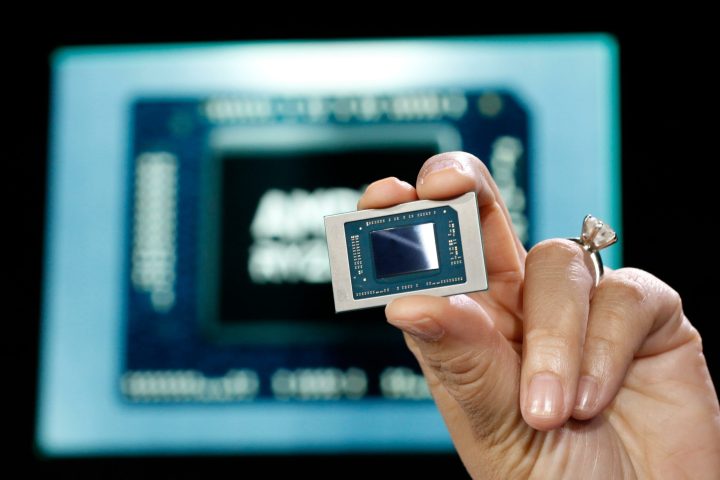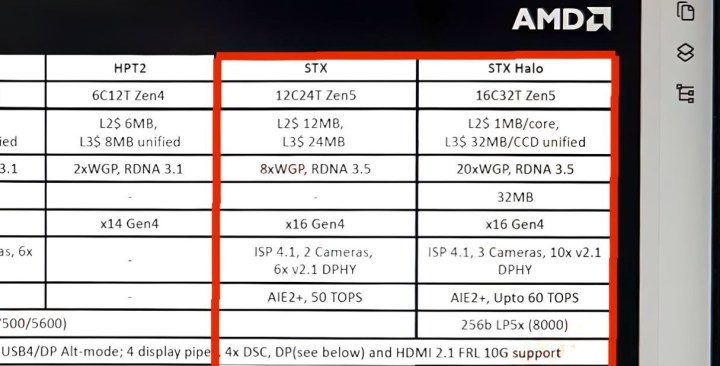
The spec sheets for AMD’s upcoming APU lineups, dubbed Strix Point and Strix Halo, have just been leaked, and it’s safe to say that they’re looking pretty impressive. Equipped with Zen 5 cores, the new APUs will find their way to laptops that are meant to be on the thinner side, but their performance might rival that of some of the best budget graphics cards — and that’s without having a discrete GPU.
While AMD hasn’t unveiled Strix Point (STX) and Strix Halo (STX Halo) specs just yet, they were leaked by HKEPC and then shared by VideoCardz. The sheet goes over the maximum specs for each APU lineup, the first of which, Strix Point, is rumored to launch this year. Strix Halo, said to be significantly more powerful, is currently slated for a 2025 release.
Let’s dig into the specs. STX APUs are said to max out at 12 Zen 5 cores and 24 threads, as well as eight work group processors (WGP), which adds up to a GPU with 16 compute units (CUs) based on RDNA 3.5 architecture. There’s also 12MB of L2 cache and 24MB of L3 cache, as well as AMD’s XDNA 2 AI accelerator that is said to offer up to 50 trillion operations per second (TOPS). This is a huge upgrade in terms of AI over its predecessor, which offered 16 TOPS, but the gains are really across the board — moving up from eight Zen 4 cores and eight RDNA 3 CUs.
Strix Point is interesting, but it’s the Halo lineup that’s shaping up to be truly exciting, all thanks to its reported graphics performance. The APU is said to max out at 16 cores and 32 threads, as well as 16MB of L2 cache, 32MB of L3 cache per core chiplet die (CCD), and an additional 32MB of MALL cache, which seems to be something similar to AMD’s Infinity Cache.

The XDNA2 NPU in Strix Halo ramps up to 60 TOPS, which is not a massive difference from Strix Point, but a huge upgrade over previous generations. Lastly, the iGPU in this APU is said to sport up to 20 WGPs, which translates to a massive 40 RDNA 3.5 CUs. For comparison, AMD’s RX 7600 XT only comes with 32 RDNA 3 CUs, so it’s easy to imagine that laptops equipped with Strix Halo will outperform mainstream graphics cards.
There’s a lot of potential for this kind of graphics performance. Thin-and-light laptops aren’t typically associated with gaming, but with this kind of hardware, they might start to be. That’s not to mention that if AMD will be able to adapt these APUs to run in gaming handhelds like the Asus ROG Ally, it will open up portable gaming on a whole new level.
We’re seeing more and more signs of Zen 5 cropping up, such as the recent motherboard updates from last week, so it’s clear that AMD and its partners are getting ready for launch. Official release dates are still a while off for these, but it’s likely that AMD will talk about Zen 5 at this year’s Computex in June. Desktop variants might make an appearance, and we’ll hopefully learn more about RDNA 4.




